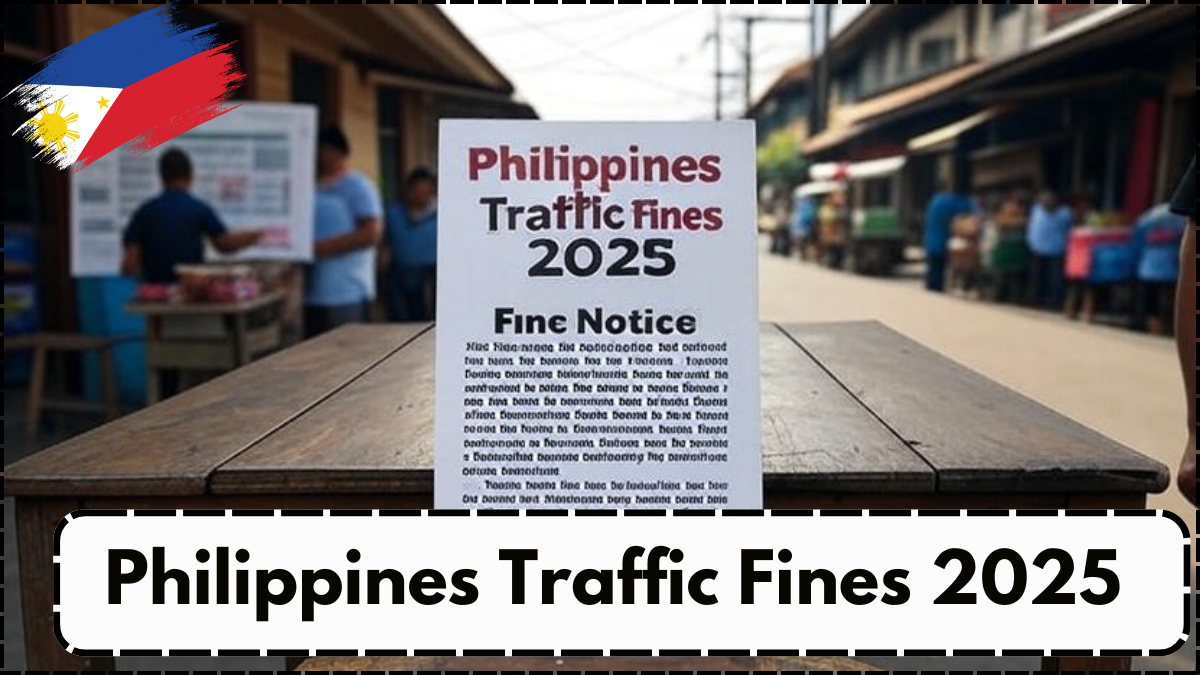The Philippines Traffic Fines 2025 announcement has brought significant updates to driving regulations across the country. With stricter enforcement, heavier fines, and the expanded implementation of the No Contact Apprehension Program (NCAP), drivers are expected to be more cautious on the road. These changes are part of the government’s effort to reduce accidents, improve traffic flow, and enforce discipline among motorists.
The NCAP system, in particular, has transformed how violators are identified and penalized. Instead of being flagged down by enforcers, violators are now monitored through high-tech cameras installed in strategic locations. This allows authorities to detect violations and issue tickets directly to the vehicle’s registered owner, ensuring accountability. The Philippines Traffic Fines 2025 is therefore not only about penalties but also about modernizing traffic enforcement in the country.

Key Features of the 2025 Traffic Fines
The new Philippines Traffic Fines 2025 introduce stricter measures for repeat offenders and common traffic violations. Authorities emphasize that these penalties are designed to curb reckless driving and encourage compliance with the law. Key features include:
- Higher penalties for overspeeding and reckless driving
- Additional sanctions for drivers caught without valid licenses
- Automatic recording of violations under the No Contact Apprehension system
- Consistent fine schedules across cities for uniform enforcement
These measures ensure that all motorists are treated equally under the law and that violators cannot easily evade penalties.
Table of Updated Traffic Fines 2025
Below is a summary of the major Philippines Traffic Fines 2025 and their respective penalties:
| Violation | Fine Amount (PHP) | Additional Sanctions |
|---|---|---|
| Overspeeding | 2,000 – 4,000 | Possible license suspension after 3rd offense |
| Reckless Driving | 5,000 – 10,000 | License suspension for repeat offenders |
| Driving without Valid License | 3,000 | Vehicle impoundment until license presented |
| Illegal Parking (NCAP-monitored) | 1,000 – 2,000 | Recorded in NCAP system |
| Running Red Light | 5,000 | Added NCAP violation record |
| Disregarding Traffic Signs | 2,000 | Ticket issued via No Contact Apprehension |
These updated rules make clear that penalties are more severe, particularly for dangerous offenses like reckless driving and red-light violations.
Role of the No Contact Apprehension System
The No Contact Apprehension system is now central to the Philippines Traffic Fines 2025. By using surveillance cameras and digital monitoring, authorities ensure that violators cannot avoid penalties by arguing with traffic officers or escaping checkpoints.
Key benefits of NCAP include:
- Faster detection of violations without causing roadblocks
- Elimination of bribery and personal disputes with enforcers
- Centralized record-keeping of all violations tied to a vehicle
- Streamlined payment system for fines through online platforms
The expanded use of NCAP is one of the most notable updates for drivers in 2025.
Public Reaction to the New Rules
The Philippines Traffic Fines 2025 and NCAP have received mixed reactions from the public. Supporters believe stricter rules will lead to safer roads, while critics worry about errors in the system and possible misuse of funds from collected fines. Some drivers also express concern about fines being too heavy for low-income motorists.
Nonetheless, authorities remain firm that the No Contact Apprehension system ensures fair enforcement and helps build a culture of discipline among drivers.
Conclusion
The Philippines Traffic Fines 2025 mark a significant step toward stricter road safety enforcement. With the growing role of the No Contact Apprehension system, drivers must now be more careful and law-abiding, as violations are recorded automatically and penalties are heavier. While the system has faced criticism, its long-term benefits for road safety and discipline are undeniable. By understanding these new rules and adjusting driving behavior, motorists can avoid fines and contribute to safer roads across the country.
FAQs
What is the purpose of the Philippines Traffic Fines 2025 update?
The Philippines Traffic Fines 2025 aim to strengthen road safety, impose higher penalties on violators, and standardize enforcement nationwide.
How does the No Contact Apprehension system work?
The No Contact Apprehension system uses cameras to detect violations, then issues tickets to the registered vehicle owner without requiring direct interaction with enforcers.
Are NCAP fines the same in all cities?
Yes, under the Philippines Traffic Fines 2025, the government has worked to ensure consistency of NCAP penalties across Metro Manila and other implementing cities.
Can drivers dispute NCAP violations?
Yes, motorists who believe they were wrongly fined under the No Contact Apprehension system can file an appeal with the designated MMDA or local government office.
Click here to learn more